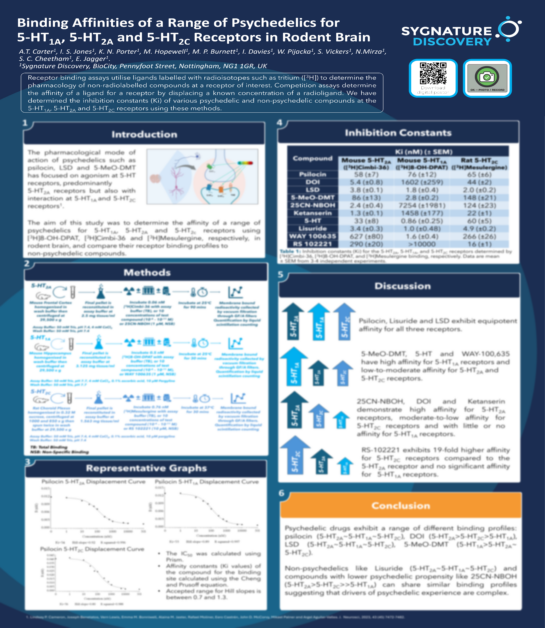Binding affinities of a range of psychedelics for 5-HT1A, 5-HT2A and 5-HT2C receptors in rodent brain
Psychedelic compounds are at the forefront of neuroscience drug discovery, offering new hope for treating a range of CNS disorder. But how do these molecules bind to serotonin (5-HT) receptors?
In this poster, Sygnature Discovery presents new data on the binding affinities of psychedelic and non-psychedelic compounds across 5-HT1A, 5-HT2A, and 5-HT2C receptors using radioligand binding assays in rodent brain tissue.
Receptor Binding: Validated Psychedelic Assays
Receptor binding assays utilize ligands labelled with radioisotopes such as tritium ([3H]) to determine the pharmacology and non-radiolabelled compounds at a receptor of interest. Competition assays determine the affinity of a ligand for a receptor by displacing a known concentration of a radioligand.
At Sygnature Discovery, we have recently validated binding assays to compare the receptor binding profiles of a range of psychedelic and non-psychedelic compounds at 5-HT1A, 5-HT2A, and 5-HT2C receptors using [3H]8-OH-DPAT, [3H]Cimbi-36 and [3H]Mesulergine, respectively, in rodent brain.
Want to explore how we can support your GPCR or CNS drug discovery program?

